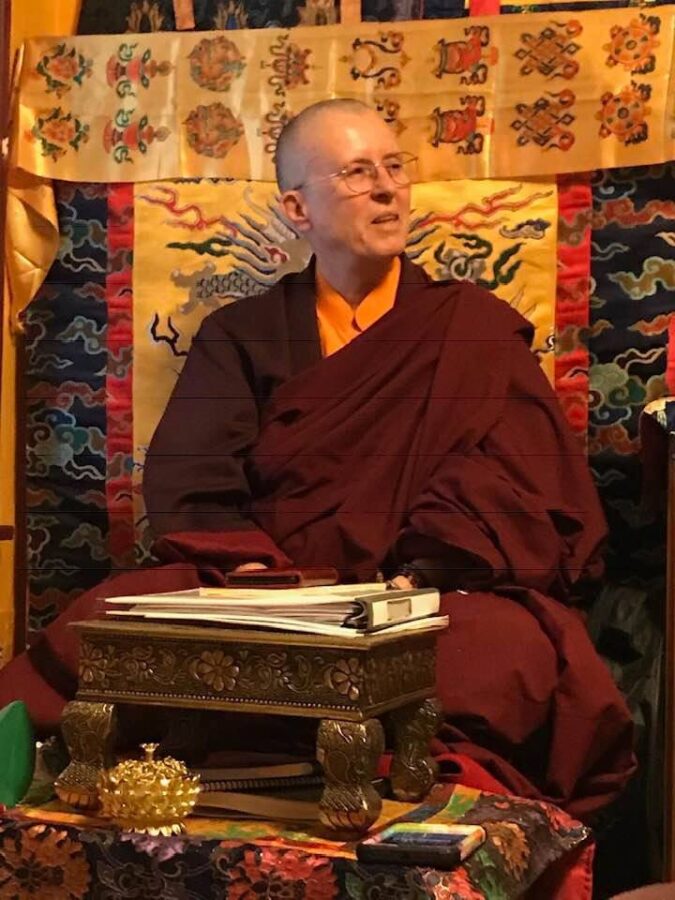Inspiring Women Who Have Gone Forth
In the sixty plus years since Tibetan Buddhism has spread beyond Tibet, women from around the world have been ordaining in this tradition. Here, we profile a selection of the more well known senior nuns along with introducing some of the younger generation of nuns, showcasing the varied and valuable work they are engaged in.
Mahaprajapati Gautami
The Buddha said, “Still there are fools who doubt that women too can grasp the truth. Gautami, show your spiritual power, that they might give up false views.”
Of all the Buddha’s great disciples, male or female, Mahaprajapati Gautami, the Buddha’s maternal aunt and stepmother, is the sole legend described as a counterpart to the Tathagatha himself. As an elderly woman she became a zealous follower, attained enlightenment after hearing only a brief discourse on Dharma and the Vinaya (the code of monastic discipline), and founded the first order of Buddhist nuns.
She was the sister of his biological mother, Maya, and both of them were married to King Suddhodhana, the Buddha’s father. It has been later said that once Maya died a few days later after giving birth to the Buddha– known in that life as Siddhartha, Mahaprajapati took the role of being a mother. Mahaprajapati Gautami became the Buddha’s caregiver, devoting all of her time and affection making sure he would grow up with everything he needed from a mother.
Of all the legends about Mahaprajapati Gautami, the most common of them all consists of her asking the Buddha to allow women to be ordained to which he says “no” three times. Even though rejected, the very determined Mahaprajapati Gautami did not give up. She led her 500 female followers to the barber and had their heads shaved. Putting on yellow robes, they followed Buddha Shakyamuni to Vaishali on foot, to request for ordination again. When all of them arrived in Vaishali, their feet were wounded, and their bodies were dusty and tears were streaming down their faces. She and her 500 followers then again requested Buddha Shakyamuni for ordination. Unfortunately, the request was rejected again.
Ananda saw the determination of Mahaprajapati Gautami and the other 500 women, and so he went and spoke to Buddha Shakyamuni again on their behalf. Ananda asked Buddha Shakyamuni if women were capable of gaining realisation in spiritual practice, which the Buddha answered yes. Ananda then went on to propose to Buddha Shakyamuni that women should also be given the opportunity and right to be ordained as Sangha members. This time, Buddha Shakyamuni agreed, under the condition that Mahaprajapati Gautami had to accept the Eight Garudhammas. With her acceptance, Buddha Sakyamuni gave ordination to Mahaprajapati Gautami and her 500 followers, and thus, the first female monastic order was established. The kind Licchavi Kings built a monastery for Mahaprajapati Gautami and her 500 nuns as a place for their practice.
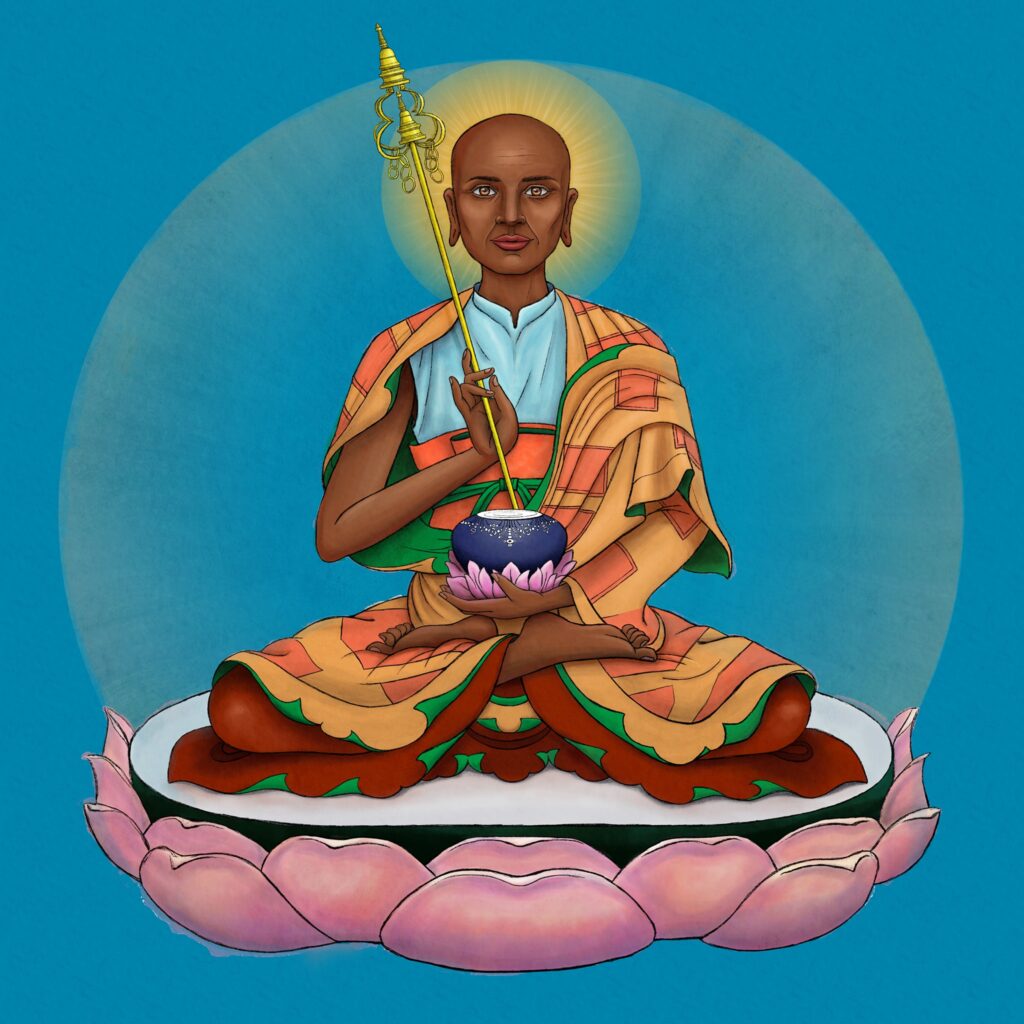
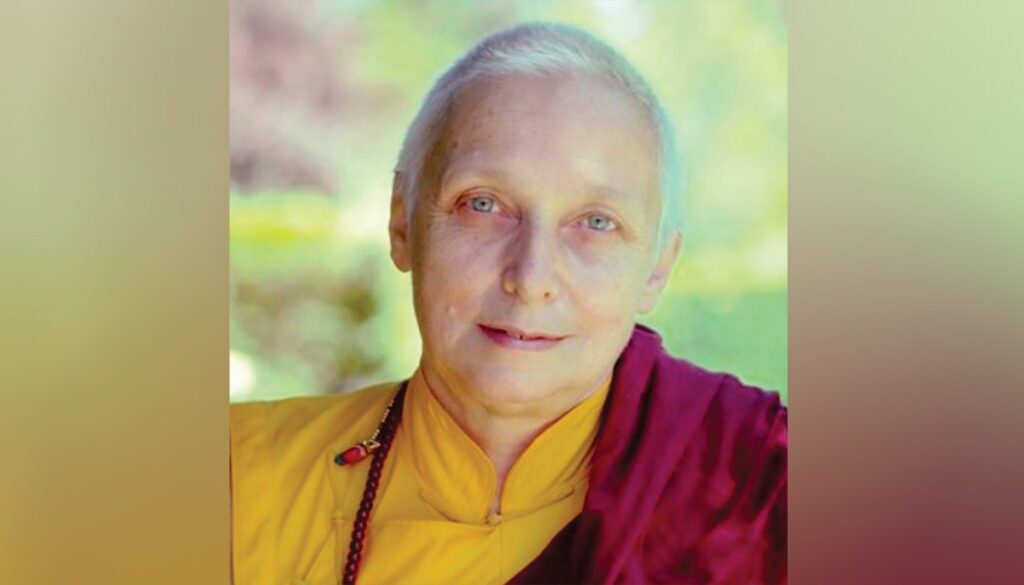
Freda Bedi
Gelongma Karma Kechog Palmo
Freda Bedi was an early champion of women’s rights, a Gandhian revolutionary, and a major force in bringing Tibetan Buddhism to the West.
Freda Bedi was born Freda Houston above a quaint watchmaker’s shop in Derby, England, in 1911. Tall, blue-eyed, and with an imposing manner, she wore many hats: Oxford scholar, professor, social worker, champion of women’s rights, wife and mother of four, Gandhian revolutionary (even imprisoned for his cause), and one of the first Westerners to be ordained as a Tibetan Buddhist nun.
Read more
Jetsunma Tenzin Palmo
Dongyu Gatsal Ling Nunnery, India
Born Diane Perry in London in 1943, Tenzin Palmo traveled to India at the age of 20. Soon afterward, she met her spiritual teacher and became one of the first Western women to be ordained as a Tibetan Buddhist nun.
After twelve years of study and frequent retreats during the long Himalayan winters, Tenzin Palmo sought deeper seclusion. She discovered a remote mountain cave, where she practiced intensively for another twelve years, including three years in complete solitude.
Following her now legendary retreat, Jetsunma founded Dongyu Gatsal Ling (DGL) Nunnery, to offer devoted girls and young women an opportunity to realize their academic and spiritual potential. She currently resides at DGL Nunnery.
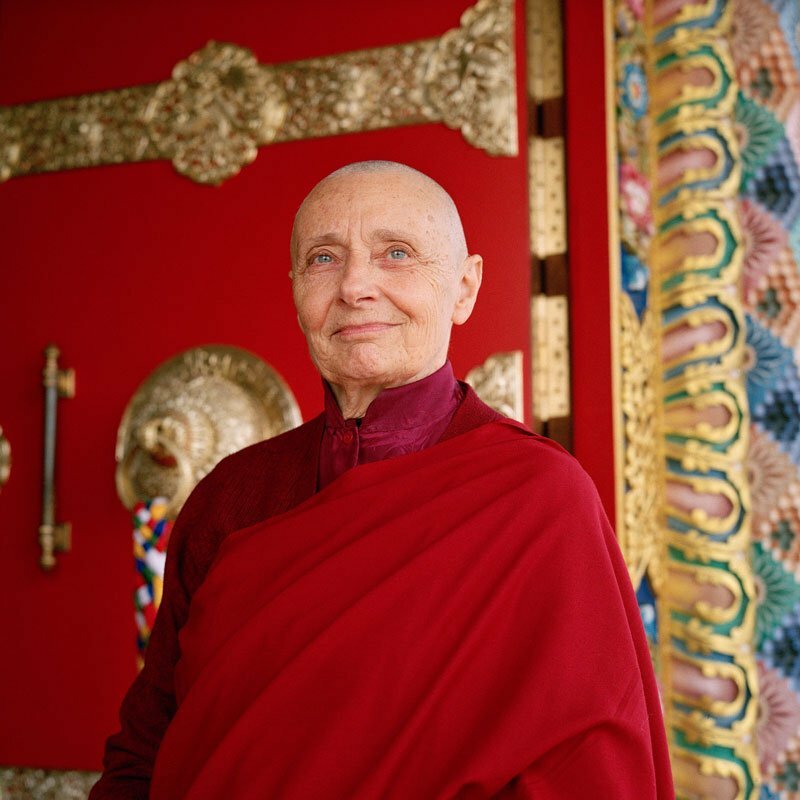
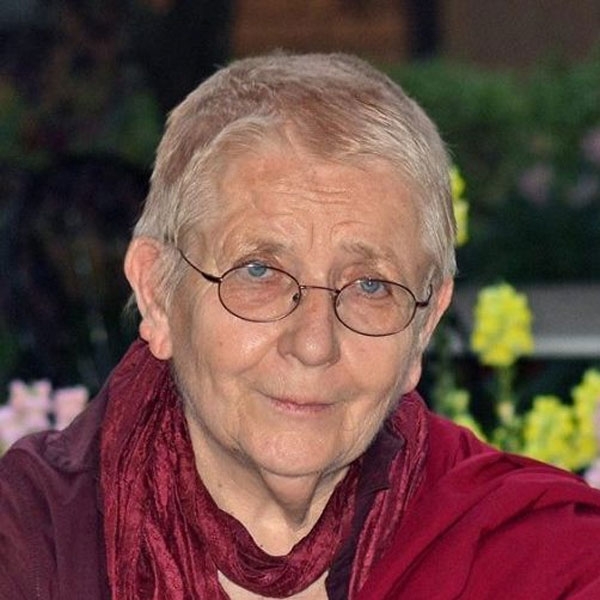
Ani Jinba Palmo
Ani Jinba was born in 1946 in Holland. She first traveled to India in 1968, and met most of the great Tibetan masters during the 10th commemoration of the Lhasa uprising in Dharamsala in 1969, where she received teachings from the Dalai Lama. She traveled to Dalhousie with Kalu Rinpoche to receive the Treasury of Oral Instructions, and started studying colloquial and literary Tibetan with various tutors in Dalhousie and Rewalsar. By the end of 1969, she received ordination as a nun from the 16th Karmapa, and in 1971 she moved to Tashi Jong to stay with her first main teacher, Khamtrul Dongyu Nyima Rinpoche, who also gave her getsul ordination. She studied at the Khampagar Monastic College with the Sakya Khenpo Rinchen, and from 1972 onwards started doing some oral translation for western Dharma students. In 1974 she translated her first Tibetan text, a short biography of Machik Labdron, published in Tsultrim Allione’s book Women of Wisdom, and since then has translated many sādhanas and commentaries at the request of various western Dharma students.
During the mid-seventies, Ani Jinpa served as HH Dilgo Khyentse’s oral translator, and in 1981 returned to Holland where she was invited to translate a text from the Tibetan Library at the Kern Institute in Leiden. She chose the biography of Vairotsana, and during a three-year retreat in Dordogne from 1982–1985 she was able to consult many teachers about this text. She didn’t get time to complete this text until 2004, when it was published as The Great Image, the Life of Vairochana (Shambhala Publications). During the 1990s, she was requested by the Vajra Vairocana Translation Committee to translate three sets of oral teachings by HH Dilgo Khyentse Rinpoche, two of which were published as Pure Appearance and Primordial Purity. From 2004–2008, she worked on the biography of the late HH Dilgo Khyentse, which was published in 2008 by Shambhala Publications as Brilliant Moon. In conjunction with the Padmakara Translation Group, she translated part of the Guide to the Words of My Perfect Teacher by Khenpo Ngawang Pelzang (Shambhala Publications, 2004). Requested by students of the late HH Penor Rinpoche, she translated a series of his oral teachings, which was published as An Ocean of Blessings (Shambhala Publications, 2017).
She is currently engaged in translating one of the sūtras for the 84000 project as well as the biography of Gyalwa Gotsangpa. She lives in India and Nepal during the winter and spends most of the summers in Europe.
Ani Marilyn Silverstone
Ani Marilyn Silverstone was a celebrated photojournalist covering Europe, Africa and the Middle East. In 1956, she travelled to India on assignment to photograph Ravi Shankar and returned to the subcontinent in 1959. What was intended to be a short trip became the beginning of a fascination with India which lasted for the rest of her life. Her photographs of the arrival in India of the Dalai Lama, who was escaping from the Chinese invasion of Tibet, made the lead in Life magazine.
From the mid-70’s on, when she was introduced to HH Dilgo Khyentse Rinpoche with whom she remained very close, she was a deeply dedicated Buddhist practitioner. In 1977 she took vows as a Buddhist nun, receiving the Buddhist name Bhikshuni Ngawang Chödrön, or Ani Marilyn to her close friends.
She passed away in Kathmandu close to Shechen Monastery, home of Dilgo Khyentse Rinpoche, in 1999. The new publication “A Portrait of Ourselves” Marilyn Silverstone from Photojournalist to Buddhist Nun has been published by Mera Publications.
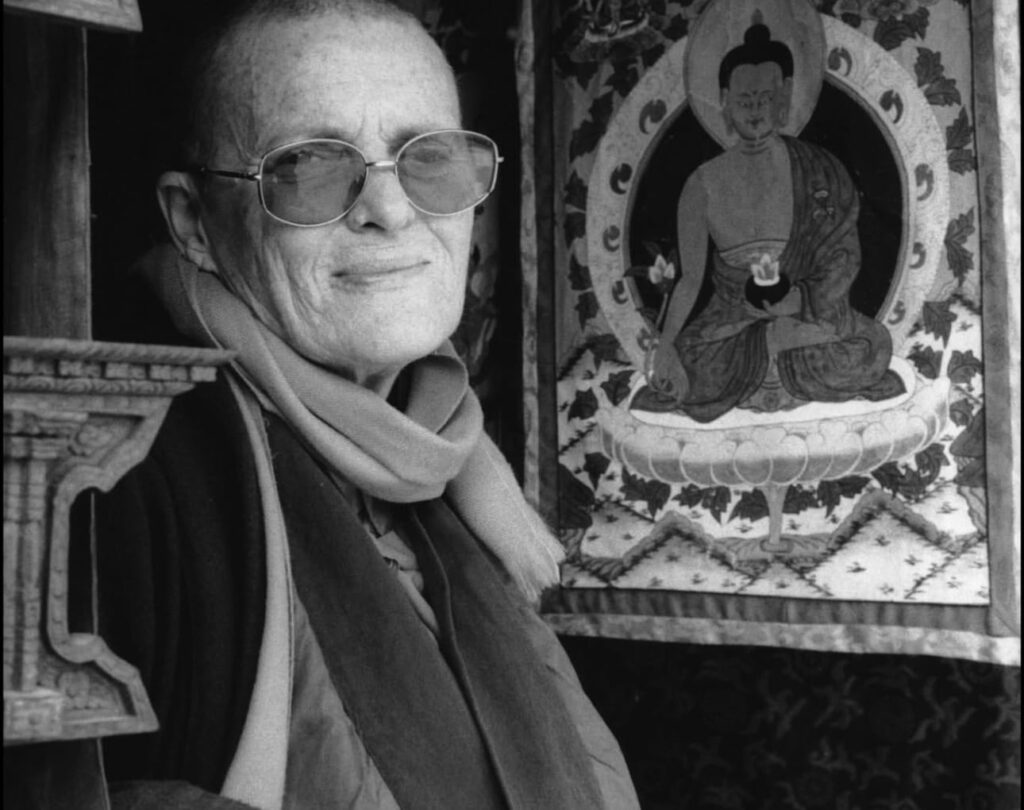
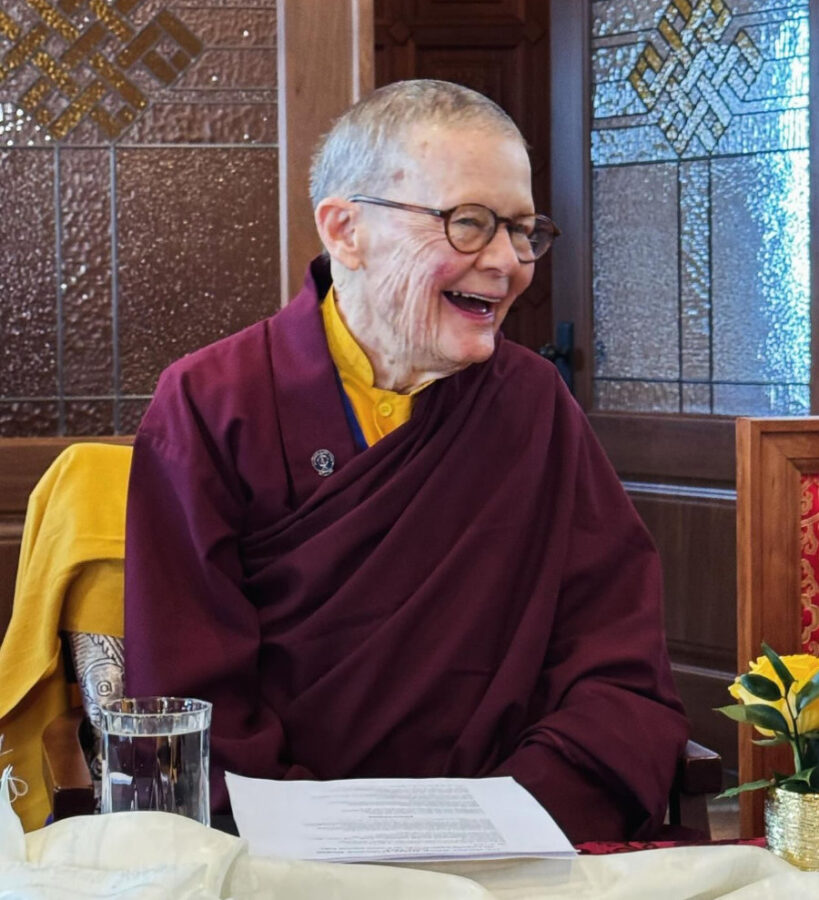
Ani Pema Chodron
Long before she became a Buddhist nun and best selling author, Pema Chodron was simply Dierdre Bloomfield Brown. She grew up in a Catholic family in NewYork City. Pema has two children and three grandchildren. In 1974, she became a novice Buddhist nun under His Holiness Rangjung Rigpe Dorje, the sixteenth Gyalwa Karmapa. Ani Pema first met her root teacher, Chogyam Trungpa Rinpoche, in 1972 and studied with him from 1974 until his death in 1987.
Read more
Venerable Thubten Chodron
In 1975, she attended a meditation course given by Lama Yeshe and Kyabje Lama Zopa Rinpoche, and subsequently went to Kopan, their Monastery in Nepal, to continue to study and practice Buddha’s teachings. In 1977, she received sramanerika (novice) ordination from Kyabje Ling Rinpoche, and in 1986 she received bhikshuni (full) ordination in Taiwan.
Read more
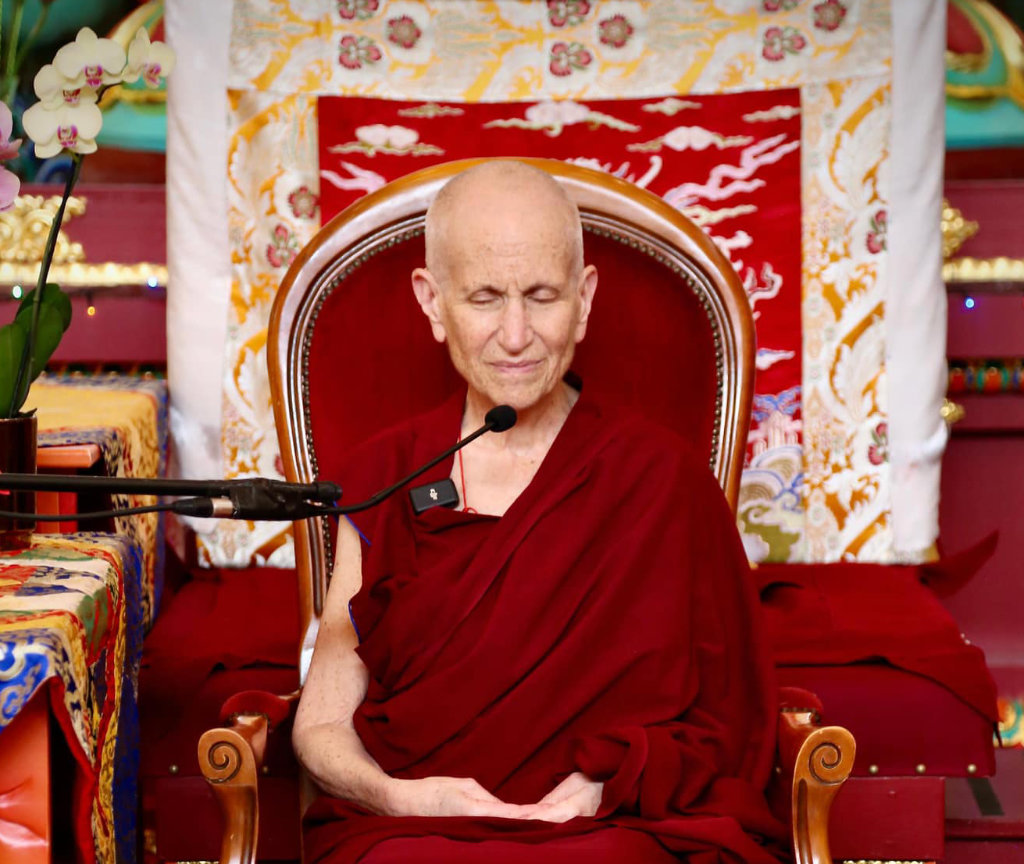
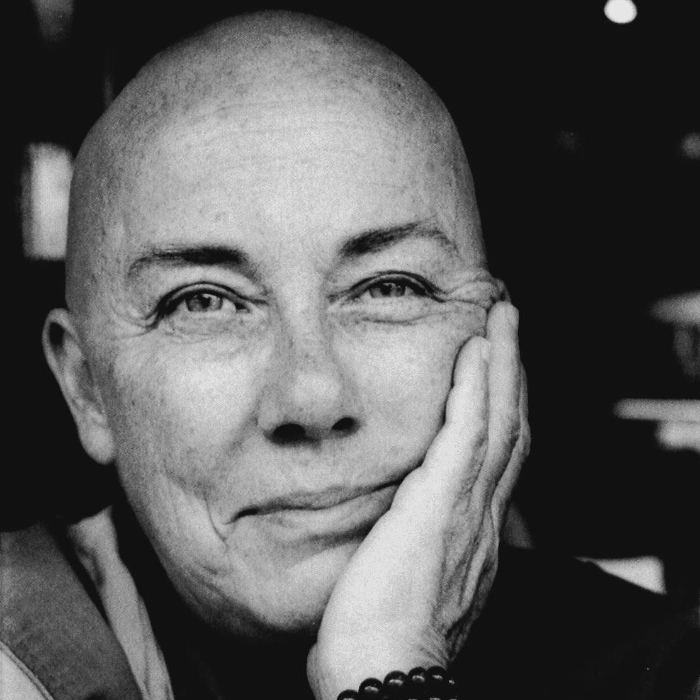
Robina Courtin
Venerable Robina was born in Australia and raised as a Catholic. Moving to London in 1967, where she lived for four years, she became actively involved in the radical left, working mainly with a London-based support group for black and Chicano prisoners, continuing to move through political activism in search of answers.
Read more
Venerable Jampa Tsedron
Dr. Carola Roloff (Bhikṣuṇī Jampa Tsedroen) is a permanent visiting professor of Buddhism and Dialogue in Modern Societies at the Academy of World Religions of the University of Hamburg. From 2010 she led a DFG research project on Buddhist nuns’ ordination, and is author of The Buddhist Nun’s Ordination in the Tibetan Canon, Possibilities Of The Revival of the Mūlasarvāstivāda Bhikṣuṇī Lineage. She received śrāmaṇerikā ordination at Tibetan Centre Hamburg in 1981 and bhikṣuṇī ordination at Miao-T’ung Monastery, Taiwan in 1985.
Read more
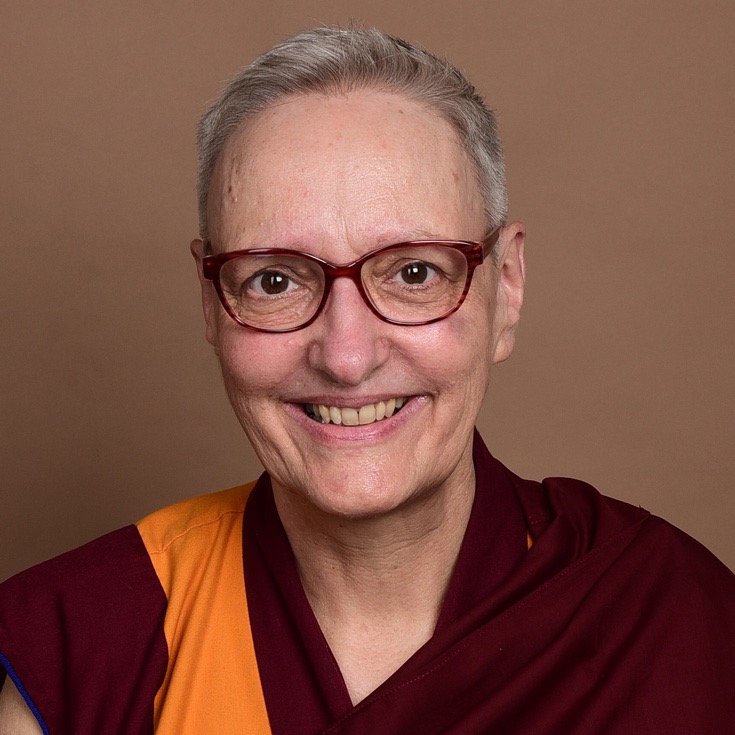
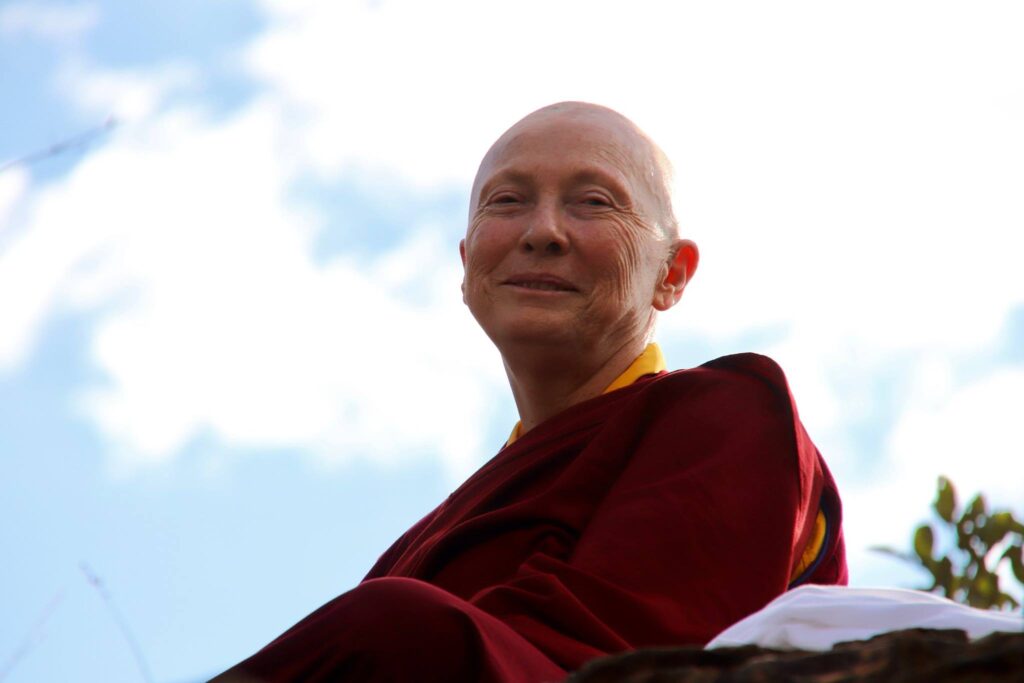
Karma Lekshey Tsomo
Venerable Karma Lekshe Tsomo already had a religion when growing up in Malibu: surfing. But being constantly teased by her classmates about her family name, Zenn, (“Are you Buddhist or what?”), she borrowed a book about Buddhism to find out what this was all about and instantly knew that this was it.
Read more
Khenmo Konchog Nyima Drolma
Khenmo Drolma is the abbess of Vajra Dakini Nunnery in Maine, USA. After her novice ordination by Drikung Kyabgon in 1997, she received the empowerment rituals of the Drikung lineage, completed many retreats and studied with Drikung Masters especially HH Drikung Chetsang Rinpoche.
Read more
